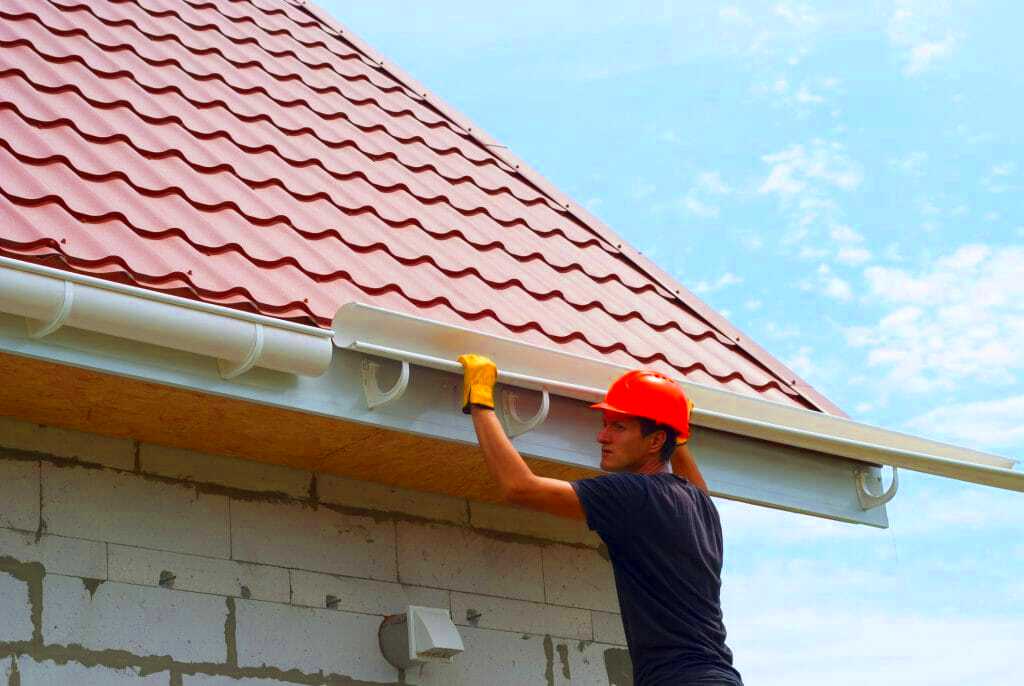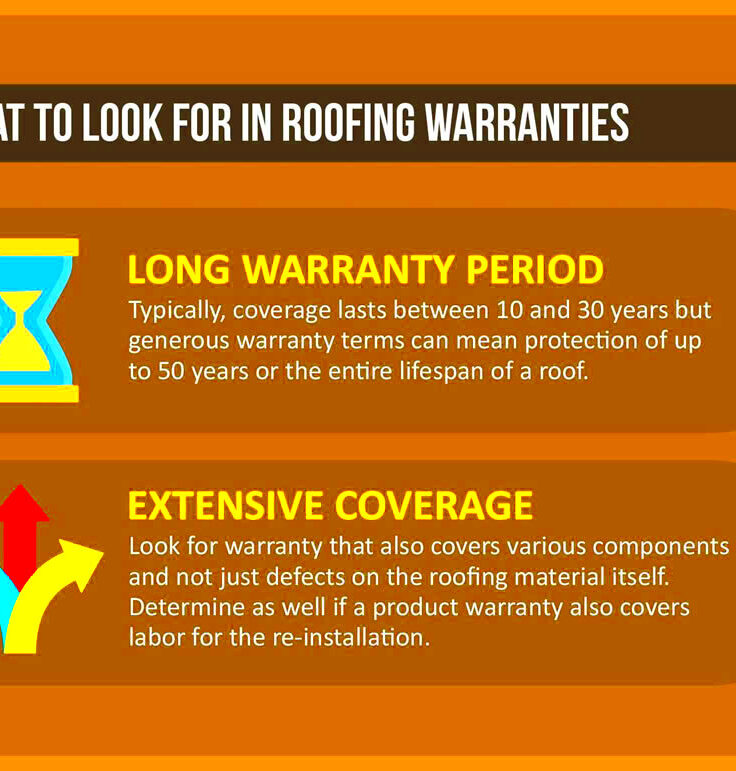California Roof Warranty Requirements Explained
Investing in a roof goes beyond selecting materials and installation services. It’s essential to grasp the nuances of roof warranties to safeguard your investment. In California the world of roof warranties can be intricate with a range of choices and legal obligations. Familiarizing yourself with the fundamentals can spare you from challenges down the road.
A roof warranty is basically a promise made by the manufacturer or contractor to take care of repairs or replacements if specific problems occur. Typically there are two types of warranties available; manufacturer warranties and contractor warranties. Each serves a purpose and provides different levels of coverage. Therefore it’s crucial to grasp the details of what each type covers.
In California the duration and extent of a warranty can differ greatly depending on the roofing material used, the contractors policies and the regulations in the state. Additionally it’s important to be aware that warranties typically have certain terms and conditions that you need to follow to ensure the warranty remains valid.
Types of Roof Warranties in California

Homeowners in California can select from various roof warranties, each providing varying degrees of protection and coverage. Here’s an overview of the most prevalent options:
- Manufacturer’s Warranty: This warranty is provided by the roofing material manufacturer. It covers defects in materials and workmanship. Typically, these warranties can range from 10 to 50 years, depending on the product.
- Contractor’s Warranty: This warranty is issued by the roofing contractor who installs the roof. It usually covers workmanship and installation issues. The duration can vary, but it often ranges from 1 to 10 years.
- Extended Warranty: Some manufacturers offer extended warranties that go beyond the standard coverage. These may include additional benefits like labor coverage or more comprehensive protection against specific issues.
Taking a close look at the specifics of different warranty types is crucial. I remember a friend of mine who ran into problems with a roof installation. They weren’t completely aware of their warranty coverage and ended up facing expenses. This experience made me realize that being well informed about your warranty terms can help you avoid a lot of stress and unnecessary expenses.
Requirements for Manufacturer Warranties

In California manufacturer warranties have guidelines that homeowners need to adhere to in order to keep the warranty intact. Here’s what you should be aware of.
- Proper Installation: Most manufacturer warranties require that the roof be installed by a certified or approved contractor. This ensures that the installation meets the manufacturer’s standards.
- Regular Maintenance: Manufacturers often require regular maintenance to keep the warranty valid. This means periodic inspections and upkeep as specified in the warranty terms.
- Documentation: Keeping detailed records of all maintenance and repairs is essential. Manufacturers may require proof that you’ve adhered to the maintenance schedule.
- Claim Process: Understanding the process for filing a claim is crucial. This usually involves contacting the manufacturer, providing proof of the problem, and sometimes, allowing them to inspect the roof.
Based on my experience I remember a family that faced a roof problem but had difficulties with their warranty due to not meeting the documentation criteria. This scenario could have been prevented through a comprehension and adherence to the warranty conditions. Therefore its crucial to carefully review the details and make sure you fulfill all the necessary requirements to steer clear of any potential issues.
Contractor Warranty Obligations

When getting a roof put on, it’s crucial to pay attention to the contractor’s warranty alongside the manufacturer’s warranty. The contractor’s warranty specifically addresses problems that may arise during the installation process like errors or issues with the quality of work. Being aware of what your contractor’s warranty entails can save you from unexpected surprises later on.
In California contractor warranties usually include coverage for the following aspects.
- Workmanship: This warranty usually guarantees that the installation work is free from defects and meets industry standards. If there are issues due to poor installation, the contractor is responsible for fixing them.
- Duration: The length of a contractor’s warranty can vary. It often ranges from 1 to 10 years, depending on the contractor and the type of roofing material used.
- Coverage: Some warranties cover labor costs for repairs or replacements, while others might only cover the cost of materials. It’s essential to clarify what is covered before signing the contract.
Based on my observations I’ve noticed that some homeowners are not well aware of the terms of their contractor’s warranty which can result in misunderstandings and conflicts down the road. For example a friend of mine encountered a problem with a roof and discovered too late that their warranty only included coverage for defects in materials not for mistakes in installation. This experience highlighted the importance of having clear communication from the beginning.
Make sure to get a warranty in writing and take the time to go through it thoroughly. If there are any terms or conditions that are unclear don’t hesitate to ask your contractor for clarification. Being proactive about this can help avoid problems down the road and ensure that you’re adequately covered.
Key Considerations for Homeowners
As a homeowner dealing with roof warranties can feel quite daunting. However grasping some important factors can help simplify the journey. Here are a few things to remember.
- Understand Your Warranty: Before signing any contract, make sure you fully understand the warranty terms. Ask for a clear explanation of what is covered and what is not.
- Verify Contractor Credentials: Ensure that your contractor is certified and has a good reputation. This can impact the quality of work and the reliability of their warranty.
- Regular Maintenance: Adhering to maintenance requirements can be crucial. Follow the recommended maintenance schedule to avoid voiding your warranty.
- Documentation: Keep all records related to your roof installation and maintenance. This includes receipts, contracts, and correspondence with the contractor or manufacturer.
I recall assisting a family member in replacing their roof. They were diligent about maintaining records and sticking to maintenance routines, which proved beneficial when a small problem came up and was promptly resolved through warranty coverage. It’s these details that can have a significant impact on safeguarding your investment.
Stay ahead of the game by being well informed. Putting in some time to grasp and handle your roof warranty can prevent you from facing major hassles down the line.
How to File a Warranty Claim
While it can be intimidating to file a warranty claim being aware of the steps involved can make the process smoother and help you achieve the outcome you desire. Here’s a simple walkthrough on how to submit a warranty claim for your roof:
- Review Warranty Terms: Before filing a claim, review your warranty terms to understand the process and what is required. This includes any deadlines for filing a claim and specific procedures to follow.
- Document the Issue: Gather evidence of the problem with your roof. This might include photographs, written descriptions, and any previous correspondence with the contractor or manufacturer.
- Contact the Manufacturer or Contractor: Reach out to the party responsible for the warranty. Provide them with all necessary documentation and a clear explanation of the issue.
- Follow Up: Keep track of your claim’s progress. If you don’t receive a response within the expected timeframe, follow up to ensure your claim is being processed.
Based on my personal experience I once had to submit a warranty claim due to a roof problem. The procedure went more seamlessly as I had carefully documented the issue and maintained all pertinent records. This played a role in expediting the resolution. Being organized and persistent can greatly impact the result of your claim.
Keep in mind that staying ahead of the game and well informed is crucial. By taking these actions you can handle the warranty claim process more smoothly and make sure that any problems with your roof are promptly resolved.
Common Issues and How to Address Them
Navigating the world of roof warranties can be quite challenging. There are often common issues that come up and having the knowledge to handle them can be crucial. Whether its problems with materials or subpar workmanship lets explore some of the challenges and effective ways to address them.
- Leaks and Water Damage: One of the most common issues is leaks. If you notice water stains on your ceiling or walls, it’s crucial to act quickly. Document the leaks with photos and contact your contractor or manufacturer immediately. Often, leaks are covered under warranty if they result from installation errors or defective materials.
- Shingle or Tile Damage: Shingles or tiles can become damaged due to various factors, including poor installation or severe weather. If you find broken or missing shingles, check your warranty to see if it covers such damage. Many warranties cover repairs or replacements for issues caused by manufacturing defects.
- Installation Errors: Sometimes, the problem lies in the installation rather than the materials themselves. If you suspect poor workmanship, gather evidence and get a second opinion from a roofing expert. Many contractor warranties cover installation errors, but you’ll need to prove the issue is due to their work.
I recall a neighbor facing roof troubles soon after it was installed. Although they were annoyed they managed to get the problems sorted out by keeping a record of the issues and reaching out to their contractor. This serves as a reminder that determination and thorough record keeping can be your greatest assets in challenging situations.
Recent Changes in Roof Warranty Laws
Staying informed about the changes in roof warranty laws is crucial for both homeowners and contractors. Recent updates have brought about additional protections and obligations that may impact your warranty coverage. Lets take a look at an overview of some significant changes that have occurred.
- Increased Transparency: Recent laws have focused on making warranty terms clearer and more transparent. This means that manufacturers and contractors are now required to provide more detailed information about coverage, exclusions, and claims processes.
- Extended Coverage: Some new regulations have extended the minimum coverage periods for certain types of warranties. This means that you may now receive longer protection against defects and workmanship issues than before.
- Stricter Compliance Requirements: There are now stricter compliance requirements for both manufacturers and contractors. This includes adhering to specific installation standards and providing proof of compliance to ensure that warranties remain valid.
Based on what I’ve seen keeping up with these changes can support you in making choices. A friend of mine recently gained from the longer coverage period due to these new regulations giving them added reassurance. Staying updated on legal matters can prevent surprises and assist you in getting the most out of your warranty perks.
Frequently Asked Questions
Roof warranties can be tricky and it’s normal to have inquiries. Here are a few questions that homeowners frequently ask regarding warranties along with their responses.
- What does a roof warranty typically cover? A roof warranty generally covers defects in materials and workmanship. However, the specific coverage can vary based on the type of warranty (manufacturer or contractor) and the terms outlined in your contract.
- How can I ensure my warranty remains valid? To keep your warranty valid, follow all maintenance and care guidelines provided by the manufacturer or contractor. This often includes regular inspections and prompt repairs of any issues.
- What should I do if I need to file a warranty claim? Document the issue with photos and gather any required evidence. Contact the manufacturer or contractor as outlined in the warranty terms, and follow their claim process. Keep detailed records of all communications.
- Can I transfer my warranty if I sell my home? Many roof warranties are transferable to new homeowners, but this depends on the warranty terms. Check with the manufacturer or contractor to understand the transferability options and any associated requirements.
Based on what I’ve seen having a grasp of these frequently asked questions can help avoid misunderstandings and make the warranty process smoother. It’s beneficial to bring up these inquiries in advance and clear up any uncertainties you might have.
Conclusion
Understanding roof warranties may feel like maneuvering through a labyrinth, but investing time in grasping the intricacies can yield significant rewards. Being well informed about the various warranty types, coverage issues and how to handle them is crucial. In my experience effective communication with your contractor and maintaining meticulous records can greatly impact the outcome. By being proactive and staying updated on legal changes you can ensure that your roof continues to provide security and comfort for years ahead. Keep in mind that knowledge has the power to transform potential roofing challenges into manageable solutions, so stay educated and take charge of your warranty process.


